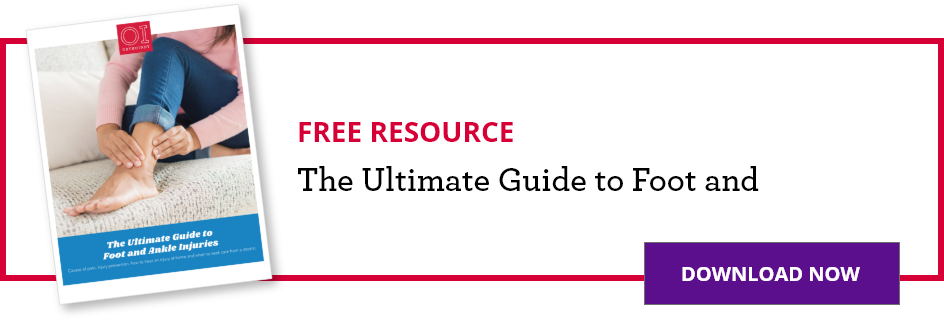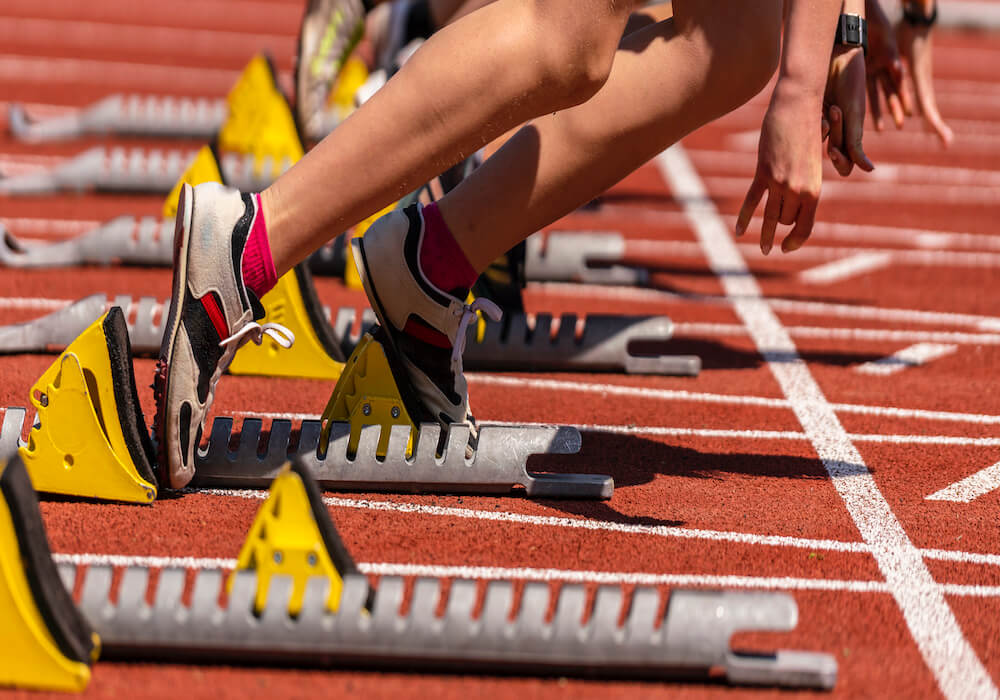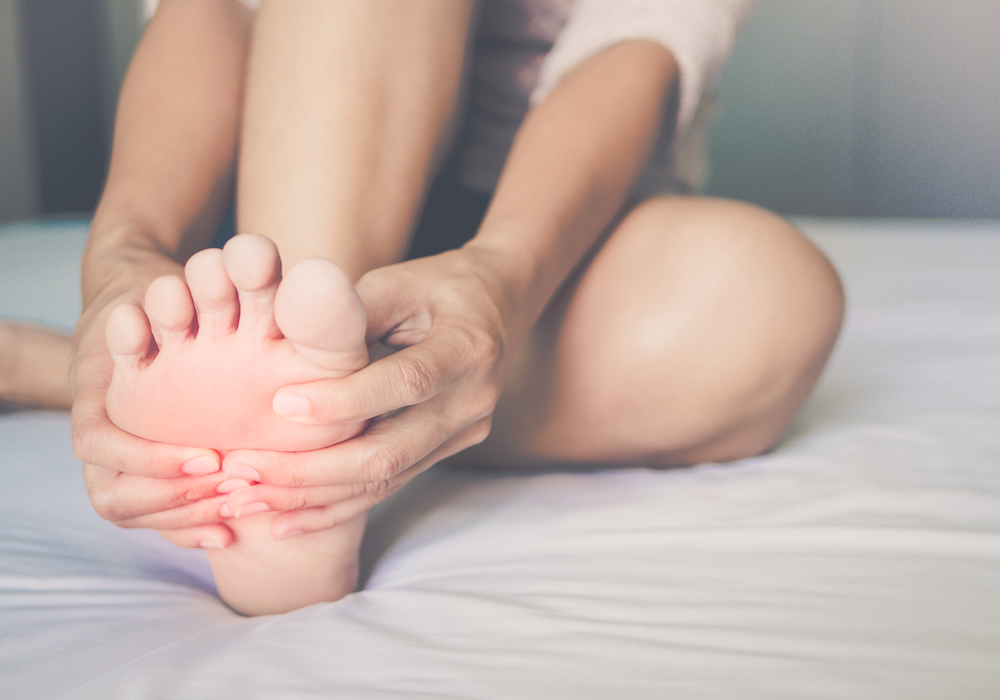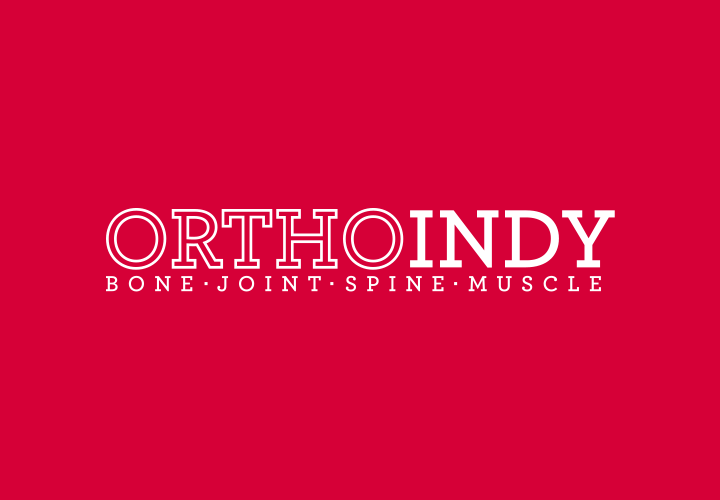THIS POST IS PART OF THE ULTIMATE GUIDE TO FOOT AND ANKLE INJURIES
Track and field is a sport that has been around for years. In fact, the first college track meet was held in London in 1864 between Oxford and Cambridge.
Track and field is a combination of jumping, running and throwing. Since track and field is highly competitive, it puts athletes at an increased risk for injury.
Is track and field dangerous?
Many sports have the potential to be dangerous. Track and field can be dangerous since athletes are running and jumping at full speed and have the potential of colliding with other people or objects. However, there are preventative measures athletes can take before an event to ensure safety.
Dr. Mihir Patel, an OrthoIndy foot and ankle specialist, discusses injuries related to track and field and how to prevent these types of injuries.

Common injuries in track and field
“We like to divide track and field injuries into three types: acute (a sudden injury), acute on chronic (an acute aggravation of a chronic condition) and chronic injuries (overuse injuries),” said Dr. Patel.
- Acute injuries may include sprains, broken bones
and ligament tears. - Acute or chronic injuries may include stress fractures, ligamentous laxity (loose ligaments) and overuse injuries such as tendonitis.
- Chronic injuries usually occur due to a biomechanical imbalance in the way a person runs causing excess stress to one area of the body.
Common injuries among professional and student track and field athletes in a variety of events include:
- Patellar tendinitis (jumper’s knee)
- Shin splints
- SLAP tear
- Hamstring strain
- Rotator cuff injury
- Spine fractures
- Plantar fasciitis
- Ankle fractures
MAKE AN APPOINTMENT WITH A SPORTS MEDICINE SPECIALIST
What is the most common injury in runners?
The most common injury in runners is runner’s knee, patellofemoral pain syndrome. This is the irritation of the cartilage on the underside of the patella (kneecap).
While some people will run through the pain, it is best to take a few days of rest in order to decrease irritation. If pain persists, try to strengthen your hip and glute muscles. However, if this fails, you may need to see a specialist.
How can track and field injuries be prevented?
There are a variety of techniques to help track and field athletes stay healthy. Below are easy ways to prevent injuries.
- Properly fitted shoes. The correct shoe should help keep an athlete’s ankle joint stable. Download our shoe buying guide to learn more about buying shoes for your feet.
- Cross-training. Try working muscles eccentrically with therapists and trainers.
- Pre and post stretching programs. Dynamic stretching can help prevent muscle stiffness.
- Correct form. Athletes should be aware of the correct form for each event.
- Stay hydrated. Try to drink water every 15 minutes especially if it’s warm outside.
How can ankle injuries be prevented?
Ankle injuries are some of the most common track and field injuries. Ankle injuries can be prevented by following the tips below.
- Warm-up. Lightly stretch or go on a short jog to loosen up your muscles.
- Start slow. Increase a new activity gradually over time.
- Be aware of uneven surfaces. Trips and falls are common causes of injuries to the foot or ankle during work or sports.
- Rest. Many foot and ankle injuries are caused by overuse.
- Prevent recurrent injuries. If you have a history of ankle sprains, try wearing a brace during activity.
- Choose the right shoe. Use sport-specific shoes that fit your foot type.
Treatment for track and field injuries
“Accidents happen in the heat of competition leading to injuries but listening to mother nature and the signals from one’s body is key to preventing injuries,” said Dr. Patel. “However, when these injuries do occur, there are non-operative treatment techniques.”
- Rest. The best treatment for overuse injuries is to let the body rest.
- Physical therapy. This is used to rehab the injured body part and help it get back to normal.
- Ice. Apply to the inflamed area to reduce swelling.
- Water therapy. Drink four to five glasses of water when you wake up.
Depending on the type of injury and if non-operative treatment is not effective, surgery may be recommended.
DOWNLOAD THE ULTIMATE GUIDE TO FOOT AND ANKLE INJURIES
To schedule an appointment with Dr. Patel, please call 317.569.2513 or learn more about treatment for foot and ankle injuries at OrthoIndy.
Schedule an appointment
Your well-being is important to us. Click the button below or call us to schedule an appointment with one of our orthopedic specialists. If your injury or condition is recent, you can walk right into one of our OrthoIndy Urgent Care locations for immediate care. For rehabilitation and physical therapy, no referral is needed to see one of our physical therapists.





